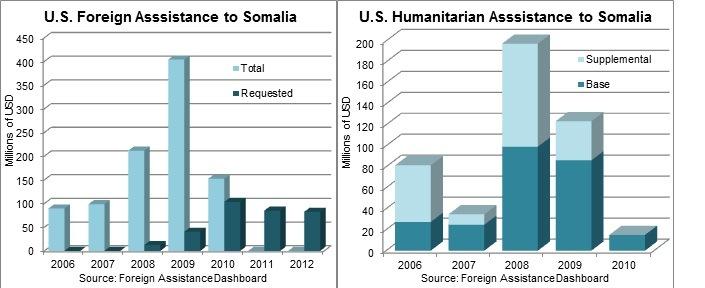

Abstract
Somalia is a country in the Horn of Africa with a high poverty rate and extensive hunger. After the government collapsed in 1991, Somali land was thrown into a civil war that has never ended. Consequently, most of its infrastructure has been demolished by years of conflict. In 2011, prolonged drought conditions caused a horrible famine that affected more than 4 million and led to the death of about 260,000 people. The main reason for famine in Somalia was a simultaneous combination of different factors, such as a severe drought, rising food prices due to crop failure, constant inner conflict, restricted humanitarian aid by Al-Shabaab extremist group, the slow response of the international community, and the lack of response from the Somalia government.
In the era of genetic engineering, modern agronomy, and cybernetics, there are still thousands of people dying from hunger and millions of people suffering from undernourishment. Somalia has outlived from disaster to disaster during the past decade, after the collapse of the central government. For several years in a row, it has been classified as one of the most fierce states full of terrorists and outlaws. The condition got worse in 2011 when a big drought came to Africa, bringing a crop failure. Furthermore, rising food and fuel prices, long-lasting inner conflict, and limited humanitarian access were the key factors that pushed Somalia into food shortage. It is worth noting that Somalia is one of the states that were influenced by a food crisis. The entire region suffered from different levels of mortality, but the food crisis has turned into a hunger problem just in Somalia. More than 200,000 people in the southern part of the country died, and it was the first time in nearly thirty years when famine had been recorded in this area. This paper aims to establish the main causes of famine in Somalia as well as to delineate the way of its prevention, mitigation, and response.
The Causes of Hunger in Somalia
The Food Security and Nutrition Analysis Unit (FSNAU) proclaimed hunger in several parts of South/Central Somalia in July 2011. It was a food insecurity period with the terribly high rate of death, more than 30 % of acute malnourishment, and great food shortages. Figure 1 demonstrates that more than 30,000 people died every month at the peak of famine. It was not just a result of drought but rather a product of various factors influenced by human activity, such as political instability, lack of governance, and long-lasting conflict. These factors destroyed traditional survival strategies that had developed over many centuries in response to natural disasters. The UN describe famine as the triple failure of governmental and international policy, food access, and food production. Poverty and crop failure in Somalia in combination with years of wars have put people in a weak position, but only political failure could cause hunger. Despite a successful raining season in 2010, the drought and lack of appropriate governance have pushed Somalia into famine. Somali authorities were not ready to cope with a large-scale famine catastrophe, as well as the international community did not ensure a timely assistance. Thus, drought, inner conflict, poverty and economic situation, and finally policies of donor country were the main causes of hunger in Somalia.
Drought
The drought happened in 2011 in the country was the most horrible dry spell within the previous 60 years in the area. In addition to poor performance in April-June 2011, the failure of the October-November 2010 rainy season led to water shortage that caused the poorest yearly production of crops in the last several decades. A lack of cultivated plants, mainly sorghum and corn, resulted in too high crop prices, whereas wages and the amount of cattle were low. Consequently, undernourished people were prone to infection and died. Hence, poverty and climate variability could be dangerous for people living in Africa.
The recent research has shown that the drought was not a purely natural disaster. Before the 2000s, droughts in this area were noted every five to seven years, but they have happened almost annually since 2008. Apparently, this shift in a drought calendar is due to global warming. As for famine in Somalia, there is evidence of climate change directly influencing food production. Therefore, while a periodical drought certainly contributed to the disaster, the crisis was undoubtedly produced by the economic and political situation as well as extreme weather patterns.
Conflict
It can be noted that famines do not take place in democratic countries. Since 1991, Somalia has had no stable government to control the country. Since 2004, the Transitional Federal Government (TFG) has tried to make some power but could not spread its authority over the whole territory. The relative stability of the post-war decade was ended abruptly in late 2006 when Ethiopian troops supported by the US attacked Somalia. From this point, humanitarian indicators have dramatically worsened that is clearly shown in the hundreds of thousands of internally displaced persons (IDPs) around Mogadishu, the capital city.
Current TFG has the unstable position in the country due to armed conflict with Islamist group Al-Shabaab. In 2008, the US named AlShabaab a global terrorist who had connections with a well-known terrorist group Al-Qaed. In April 2010, the UN Security Council encouraged acts against Al-Shabaab by imposing sanctions and declaring it as a threat to peace and security in Somalia.
Al-Shabaab had an old-established antipathy toward food aid, believing that it undermined the basis of Somalias agricultural industry. This assumption was a reason for the rejection of the World Food Programme (WFP). Lots of humanitarian agencies were infringed upon their rights by Al-Shabaab regional coordinators. They imposed control and implemented violent fundraising tactics, comprising taxes. As a result, key global institutions, like the WFP, were transferred from areas controlled by Al-Shabaab. It was a required step to guarantee safety, especially after killing a few humanitarian workers. Considering Al-Shabaabs attitude towards philanthropic institutions, a lot of people accuse him of dramatic hunger consequences.
The civil war has had a destructive impact on infrastructure in most of the regions in Somalia. The famine occurred particularly in those areas where the conflict further obstructed the traditional instruments of overcoming drought and prevented access to supporting organizations. Accordingly, the best way to prevent hunger is to create such a political system that can protect and assist its nation in case of natural disasters.
Economic Situation
Agriculture remains the key industry in most African countries, including Somalia. The civil war in Somalia destroyed traditional agricultural practices and forced farmers, traders, and local people to migrate from their land in search of work and food. Consequently, crops failure, mainly sorghum and corn, resulted in a significant increase in grain prices.
The UN Food and Agriculture Organisation (FAO) stated, World food prices rose by 39% in the year to July 2011, to an all-time high. The price of the same product in East Africa doubled. Among the factors influencing the pricing was food speculation. It is especially evident comparing food investments in 2003 ($3 billion) with those in 2011 ($126 billion). Scholars mentioned that it was also a fault of banks that betted on food when persons died from famine. That is how the higher prices of top three food commodities (e.g., wheat, maize, and rice) have eventually led to hunger. Thus, speculation about food products was one of the noteworthy factors.
The Policy of Donor Countries
The militarization and politicization of philanthropic support reflect the policy of donor countries during hunger in Somalia. Even though the FSNAU and Famine Early Warning Systems Network (FEWSNET) predicted famine 2011, the response of the global community has been slow and inadequate. Otherwise, many people could still be alive. The reason for it should be sought in the US geopolitical interest and its shift from a humanitarian one to security. Famine in Somalia took place at the same time as terrorist attacks, and there were concerns that aid in Somalia could be used mostly for political profiting. Figure 2 shows that US foreign assistance fell almost four times within several years. Thus, a significant amount of humanitarian support was given only after extensive media attention to the event.

Figure 1. US foreign and humanitarian assistance to Somalia, 2006-2012.
Considering the situation in Somalia, one must not lose sight of the fact that hunger existed amid successive wars led by the West in North Africa and the Middle East. For example, the US spent much money on wars but did not provide enough funding to overcome the food crisis. According to the UN, the humanitarian reaction to the Horn of Africa should have been about $2 billion, whereas the price of Afghanistan and Iraq wars was near $4 trillion. Hence, commercial interest (oil control) was given precedence over preserving human lives.
Overpopulation is viewed as a dire threat, and it may be one more reason why donor countries did not hurry to provide assistance for Somalia. Henry Kissinger, the previous US Secretary, claimed that the main course of action regarding the Third World had to be depopulation. Some officials even considered famine as the fastest way of decreasing population in underdeveloped countries. For this reason, foreign assistance and charitable donations were insufficient to remove hunger from Somalia.
- Free formatting
- Free email delivery
- Free outline (on request)
- Free revision (within 2 days)
- Free title page
- Free bibliography
- 24/7/365 Customer Support
- Quality research and writing
- BA,MA, and PhD degree writers
- 100% confidentiality
- No hidden charges
- Works are never resold
- 100% authenticity
- 12pt. Times New Roman
- Double-spaced/Single-spaced papers
- Up-to-date sources
- Fully referenced papers
- 1 inch margins
- Any citation style
Hunger Consequences: Somalia Famine 2011-2012
Though the food security crisis in Somalia was well predicted, the consequences were tremendous due to a late and inadequate response. The UN Office for the Coordination of Humanitarian Affairs (OCHA) identified that more than 2 million people needed emergency assistance. The situation even became worse, with more than 3 million people requiring a fast, life-saving aid. The UN declared the end of the food crisis in 2012 but claimed that extra philanthropic support remained vital to many people, containing more than 300,000 children with undernourishment. A good rainy season improved food security. Moreover, humanitarian support, cash crops, and a significant harvest of grain contributed to food access in most areas. The hunger situation depends on political stability, the continuance of humanitarian funding, and rains, so these factors are important to improve it. Figure 3 illustrates that most people in Somalia are still in crisis according to the IPC scale. Every day, the population faces a food consumption challenge and temporary volatility when nutrition is of an insufficient level.

Figure 2. The IPC stages of hunger in Eastern Africa.
Leaving more than 10 million people at risk, hunger in Somalia has risen the disease and death rate, particularly amongst children under the age of five. To evaluate the healthy weight of the population, scholars use malnutrition as an indicator of hunger situation in the country. It happens to be indirectly related to consumption, food access, and food availability in the area. One of the consequences of famine in Somalia is huge IDP movements. To illustrate, about 50,000 people moved to Somalia capital Mogadishu in 2011, resulting in the highest concentration of seekers. Regardless of the positive tendency towards the food crisis, lack of confidence, critical levels of malnourishment, movement of people, civil rights violations, and unsatisfactory educational and medical opportunities are still the most crucial issues in Somalia. Eventually, the situation can be easily turned back into very severe conditions.
The Fight against Hunger
Actions against hunger in Somalia can be described by a problematic access of philanthropic organizations to Al-Shabaab controlled territory. Also, the negotiation process between the UN and Al-Shabaab was unsuccessful. It worth noting that development and humanitarian assistance in Somalia was often used as a manipulation tool, both for political and individual purposes. Only when famine was declared in 2011, it brought a delayed humanitarian reaction to the problem. The most important factors determining a response were political risk preferences and donor geopolitical concerns due to the probability of aid leakage, risking to fund Al-Shabaab in an indirect way.
The first responders to the food security crisis in Somalia were residents, diaspora, and different local organizations. Financial contributions from the Somali ethnic population is measured in large amounts. For instance, the general public donated about 1 million dollars to the famine-affected regions. The assistance of Somali diaspora was about a half of the countrys GDP. Aid coming from the business sector was given as agreements with international NGOs, UN organizations, and suppliers of different goods and services (communications, transport, logistics, and private security services).
Humanitarian partners contributed at significant speed and size in response to famine declaration. Their contributions made up about 30 % of assistance dedicated to combat hunger. While many Western contributors hesitated with assistance, Arab and Muslim donor countries played a key role in philanthropic actions and monetary donations. Among all, Turkish organizations were the most visible members in the fight against hunger in Somalia.
The lack of CARE International and the WFP on the territory affected by famine was a main feature of the reaction. Their absence had serious consequences for the supply of food. In 2011, Al-Shabaab exiled 16 philanthropic organizations from operating in Somalia. As a result, the major donors sometimes provided contradictory information that seriously complicated the situation. Most agencies operated through local organizations, managing remotely via interventions based on cash. The evaluation of different unqualified voucher and payment programs has shown some positive results, such as opening new lines of credit, debt repayment, and increasing meal variety.
Possible Solution of the Problem
Although droughts cannot be avoided, appropriate measures can be applied to prevent their development into famine. The question is not in extra philanthropic assistance but the ability to put food security into practice. Relief alone can not ensure the long-term positive effect even if it can improve the situation. The International Federation of Red Cross and Red Crescent Societies (IFRC) confirms that the way of investment should be changed. It insists on creating public flexibility and allowing people to be above natural dangers that often challenge them. Therefore, the government and supporters should adopt a comprehensive, long-term approach that addresses fundamental matters.
One of the most important longer-term approaches is to invest in food production. It will give an opportunity to the people of Somalia to cope with hunger and create a long-lasting food infrastructure. The example can be a smallholder farming, which is an ideal solution for previous pastoralist groups and have to be extended. Practical school training should be organized for the locals in order to provide a new knowledge of agricultural best practices and current techniques. The prior pastoralists must learn how to prepare the land and plant different crops together with environment and soil conservation. Areas having trade routes and food production can protect themselves from hunger and food high prices as in the case of Somalia.
Another part of the solution is to increase national investment in social services, like financial support for poor households, and the infrastructure of the community (e.g., communications and roads). There should be a shift of emphasis to medicine and education to ensure a quality of life in the country. Certainly, the government must regulate food prices in the period of drought to prevent speculations in the food market. Besides, the reduction of disaster risk should be one of the main concerns. These approaches demand political stability, which Somalia has not had for quite a long period. Unfortunately, the Somali people will still lack food as a basic necessity if the government does not meet this challenge.
Conclusion
It is possible to define hunger in Somalia as a man-made disaster due to international policies. In addition to drought, Somalia hunger was produced by a number of human activity factors, including the long-lasting conflict, political instability, lack of governance, wide geopolitics, climate change, and unfair global economic structure.The above-mentioned famine causes are essential for the understanding of its origin, and they contribute to the solution of the problem and its prevention in the future. Only comprehending the nature of famine causes in Somalia can ensure such catastrophes will never happen again. On the one hand, it is necessary to develop own food production and invest in community facilities. On the other hand, humanitarian assistance should be not related to economic and military goals. In general, peace, stability, and sound infrastructure are the fundamental requirements for the sustainable development of Somalia.





